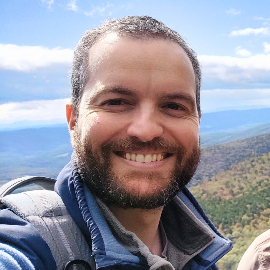-
Date:
12 Sep 2024
-
Location:
Room 2.2.15, Ciências ULisboa & Online
-
Schedule:
14h00-15h00
-
Lecturer or Responsible:
Marcos Carlucci, Universidade Federal do Paraná, Brazil

The Araucaria Mixed Forest (AMF) is a critically endangered ecosystem within the Atlantic Forest hotspot, with most of its range in southern Brazil. Over a century, timber overexploitation and land-use conversion have reduced the AMF to just 4.3% of its original extent. Most fragments are very small, and most landscapes lack sources of propagules, which underscores the need for active restoration throughout the range of the AMF.
However, a literature review shows that passive restoration (76% of studies) predominates in the AMF. In active restoration, only 108 out of the 1208 tree species of the AMF are used. Other biases include the underrepresentation of typically dominant families of the AMF and the lower proportion (62%) of animal-dispersed species than is typical of AMF (~90%). Increasing the number of native tree species in nurseries and trait-based restoration planning are potential ways to reverse the decline of this unique forest.
Marcos B. Carlucci

I am an ecologist and conservation scientist with a special interest in the assembly and reassembly of communities at varying spatial and temporal scales. I use trait- and phylogeny-based approaches to address questions in community ecology, conservation, and restoration. Most of my studies in vegetation science address questions from local to regional spatial scales, but I also have experience working with macroecological scales. Recently, I have been especially interested in understanding the assembly and functioning of the Araucaria mixed forest, mostly in forest-grassland mosaics, as well as in the conservation and restoration of this unique and threatened ecosystem.

